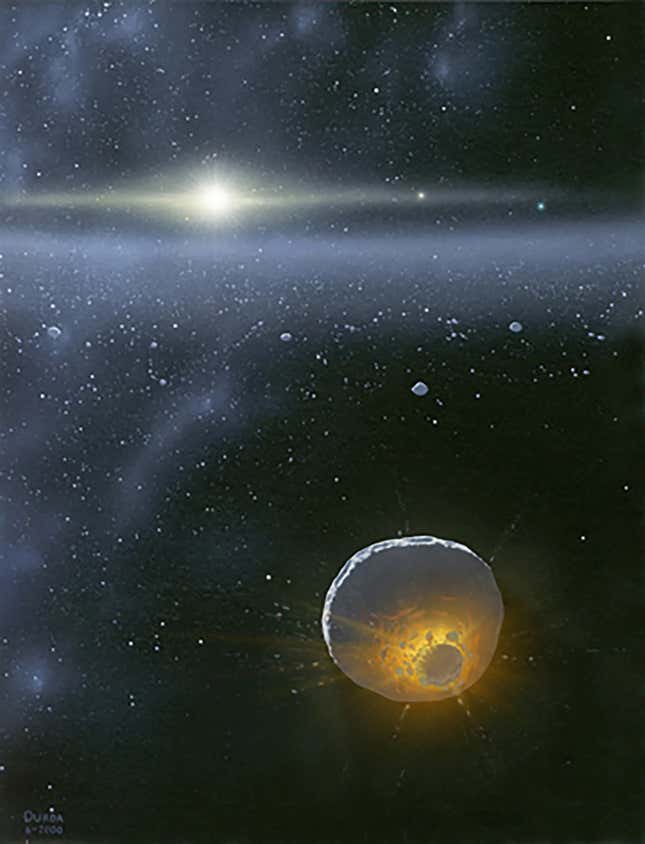While journeying through the far reaches of the solar system, the New Horizons probe picked up a dusty trail of icy fragments that may indicate that the Kuiper Belt—home to former planet Pluto and countless other objects—is way bigger than we thought.
New observations from the NASA mission suggest that the massive donut-shaped outer zone of the solar system, also known as the Kuiper Belt, could extend billions of miles farther than current estimates. There even might be a second, outer belt altogether, according to a study published in The Astrophysical Journal Letters.
New Horizons became the first spacecraft to visit Pluto in 2015 and has been exploring the Kuiper Belt in an extended mission ever since, zipping through a region filled with the frozen leftovers from the early solar system. The spacecraft’s Venetia Burney Student Dust Counter (SDC) instrument has been detecting higher than expected levels of dust. The dust is made up of remnants from violent collisions that took place between objects in the Kuiper Belt.

Previous models of the belt show that the amount of dust should start to decline a billion miles into that distance. The density of dust detected by New Horizons, however, defies those models, suggesting that the Kuiper Belt could extend much farther out than scientists believed. The outer edge of the belt, where the density of objects starts to decline, was thought to be at about 50 astronomical units from the Sun (one AU is the distance between Earth and Sun, about 93 million miles or 140 million kilometers) but new evidence suggests the Kuiper Belt may extend to 80 AU or even beyond that. The farthest planet from the Sun, Neptune, is located 30 AU away.
“The idea that we might have detected an extended Kuiper Belt — with a whole new population of objects colliding and producing more dust – offers another clue in solving the mysteries of the solar system’s most distant regions,” Alex Doner, a physics graduate student at the University of Colorado Boulder, and lead author of the new paper, said in a statement.
The evidence presented by New Horizons is also supported by ground-based observations from the Japanese Subaru Telescope in Hawaii, which discovered a number of Kuiper Belt objects beyond what was thought to be its outer edge. Scientists are carrying out more observations of the belt and looking into other explanations, like a second belt that has not been discovered yet. Another possibility is that radiation pressure and other factors pushed dust that was created in the inner Kuiper Belt out past the 50 AU edge.
New Horizons launched on January 18, 2006. The mission was originally supposed to wrap up in 2024, but NASA recently decided to extend it until the spacecraft exits the Kuiper Belt, which is expected to take place as early as 2028.
With its new lifeline, New Horizons has plenty of time to explore the massive ring of icy objects and one of the largest structures of the solar system.
More: The Coolest Images Taken by NASA’s New Horizons Spacecraft





















+ There are no comments
Add yours